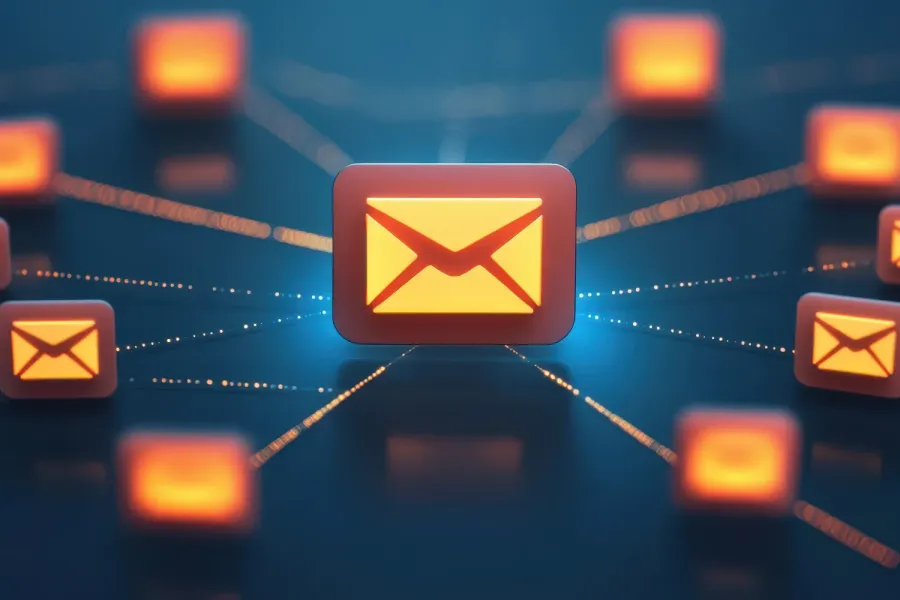
If you've ever sent an email only to discover later it was stuck as "queued," you know what it's like to worry there's an issue with your inbox.
In this article, we'll explain what a queued email is, why it might be happening in your inbox, and how to address this issue and resume your regular email activities.
What is a queued email?
Whether you use Gmail, Outlook, or another email client, queued emails can occur for many reasons. Whatever the cause, a queued email is waiting to be sent until the issue preventing its delivery is resolved.
In many instances, these issues go unnoticed and are quickly resolved on their own. But other times, they require manual intervention to stop queueing and start sending.
Why are my emails queuing?
Emails can be queued for various reasons — and often, these issues have nothing to do with the user. For example, an email client might be experiencing a technical issue, which they will usually resolve themselves in a timely manner.
If you've noticed an accumulation of queued emails or a message has been waiting to be sent for longer than usual, it may be worth taking a look yourself to diagnose and fix the issue.
How to solve queued email issues
Emails that are stuck in a queue for an extended period of time may require your intervention to resolve. These issues are sometimes unique to a single email, account, or device.
Luckily, identifying these issues without a lot of technical knowledge is quick and easy. We've gathered the most common causes of a queued email and what you can do to fix it:
Check your internet connection
One of the most common reasons for a queued email is a lack of internet connection. If you're connected to the internet, test other devices on the same network to see if they can load pages or apps. If multiple devices on the same network are struggling, you'll want to reset your modem and router or contact your service provider to report and resolve the issue.
If other devices on the same network are quickly loading content or if the device you're using is connected to a cellular network, a restart may be in order. Restarting a device can force it to clear out tasks that are running in the background, which could be preventing the internet from working properly.
Check for offline mode
Some email clients, like Gmail, may allow you to operate in offline mode. While this mode can be useful for viewing emails when you're not on an active internet connection, it can trick you into thinking you're able to send messages.
Offline mode can be enabled or disabled in your settings. Double-checking offline mode and testing your internet connection in the step above can help ensure you're actually able to send a message.
Schedule send emails
Maybe you send a lot of emails using your email client. Many free accounts, and even some lower-level paid accounts, have a limit on the number of emails you can send per day, week, or month. These limits are meant to ensure that users aren't sending out spam.
If you're hitting your daily email limit, consider a new approach by scheduling your messages and spacing them out. This can be done through both Gmail and Outlook accounts.
Scheduling an email to be sent the next day instead of the same day can ease the burden on your daily limit. You can also schedule to send emails on a day when you're not actively working. For example, if you typically work Monday through Friday, consider sending some emails over the weekend with a note that they're non-urgent and can be read later.
Check your account space
Most email accounts, especially free ones, have a limit on storage space. This space is reserved for every email you send and receive, as well as their attachments. Your account may be queuing emails because the maximum storage space has been reached.
The best way to manage your account space is to keep only essential emails and delete unimportant messages. By removing less important emails, you can clear up space that you can use for a longer period of time.
If your account is maxed out, you should go through your inbox and remove excess emails. Many email clients will let you quickly search messages from certain subscriptions to delete them in bulk or clear out a folder. Folders like promotions, social, and spam can hold a lot of unread and unneeded emails.
Update your email client app
If you're using a phone to access your email client, your app may be outdated. It may need to be updated before it can access the email service and send messages.
To check if your app runs the latest version, open your device's app store and search for your email client. Next to the result, you should see the ability to update or open the app.
If the option is only to open the app, you’re likely on the latest version. However, if there's an option to update the app, you'll need to download the newest update. Once that's complete, send a test message to yourself.
Avoid spam-like behavior
Finally, your email client may be filtering the emails you send if it suspects you're engaging in spam-like behavior. For example, the client may prevent you from sending messages if you're using all caps in your subject lines with excessive exclamation marks or sending attachments and links to unreliable sources.
Double-check your email for any of these issues. If you're trying to use your personal or free account to promote your company or brand, you should consider an email marketing service instead.
The bottom line
With the mystery of queued emails solved, you can get back to work on the things that matter most.
Superhuman is fastest email experience ever made. It can help you fly through your inbox twice as fast, is made for Gmail and Outlook, and works wherever you do. Get started now and save four hours or more every single week.




